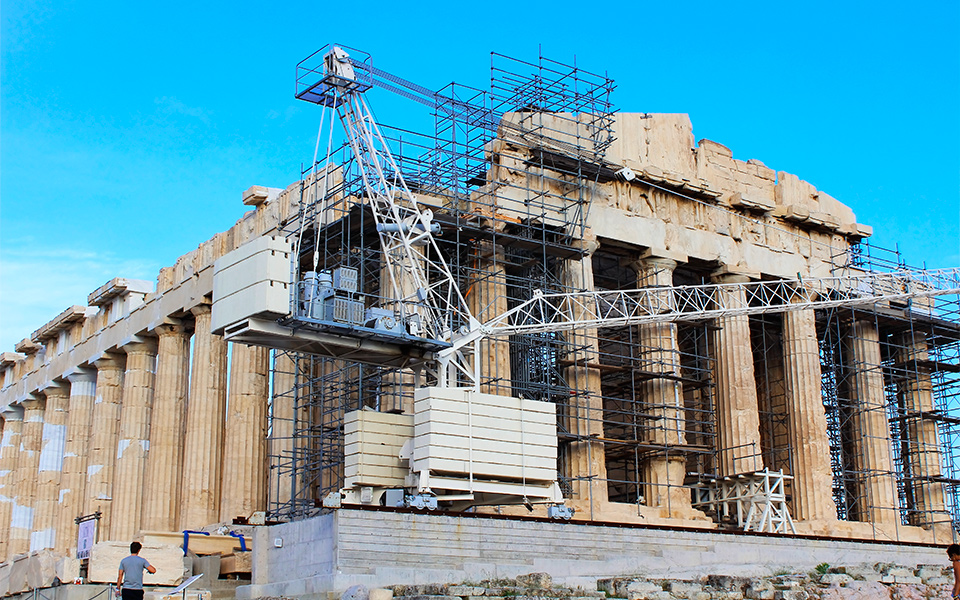Out This Weekend: Greece Is Athens Winter 2025-2026
Pick up a copy of our…

The northern wall (on the right side of the image) will be reconstructed with old and new stones to be as it was following the bombing of the Parthenon in 1687.
The Parthenon is to be brought closer to its original form after the Central Archaeological Council (KAS) green lit works to reconstruct the long northern wall of its inner structure (known as the cella or naos).
The relevant study that was debated by the KAS bears the signature of the late architect Charalambos Bouras, a key figure in the long-running restoration of the Acropolis who served as president of the Committee for the Conservation of the Acropolis Monuments. The study proposes rebuilding a section of the fallen wall by reinstalling 360 ancient stones alongside 90 new ones made from marble from the area of Dionysos in northern Attica which closely resembles the original Pentelic marble of the Parthenon.
This will effectively return the northern wall to the form it had following the bombing of the Parthenon by Fransesco Morosini in 1687 and up to 1822 when the Ottomans dismantled approximately 500 ancient stones during the siege of the Acropolis in order to remove the lead elements which were used by the ancient builders to link the stones.
In the first phase of the restoration, the height of the west side of the wall will reach 4.5 meters, while on the east end it will reach 10 meters. Where the restoration includes the section which once bore the frieze and the architrave – which were destroyed during the siege of 1822 and by the plundering of the Parthenon Marbles by Lord Elgin – the height of the west side of the wall will reach 13 meters. This portion of the study was the subject of intense debate among the KAS and, according to sources, two members of the council registered concerns, asking for further study in order to avoid, as much as possible, the use of new material.

The restoration of the Parthenon has lasted decades.
© Shutterstock
The decision from the KAS is of great import as a restoration project will now move ahead that will restore the appearance and identity of the Parthenon. When the restoration of southern wall also moves ahead (guided by the study of the northern wall) the geometry and particular architecture of the building will be better revealed. Both works will be expensive and painstaking, taking at least 15 years.
According to the Directorate for the Restoration of Ancient Monuments, the study for the restoration was a “very important event in the modern history of the Parthenon,” as it is connected to the work and restoration plans for the monument by Charalambos Bouras and the professor and KAS member Manolis Korres which began over three decades ago.
Works to restore the Acropolis began following the founding of the Greek state in 1834-1835, but with the use of industrial iron. In 1922 a large restoration program began but the iron caused corrosion and distortion to the restored portions, causing new interventions to be required. A new beginning for the restoration work on the Acropolis began in 1975 with the founding of the Committee for the Conservation of the Acropolis Monuments.
Pick up a copy of our…
The British Museum hints at a…